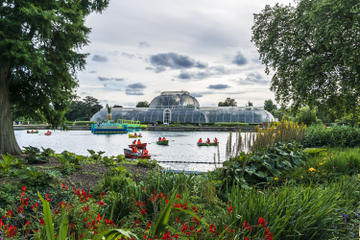Kew Gardens
TIME : 2016/2/22 10:43:20

Kew Gardens
Covering over 120 hectares, the Royal Botanical Gardens in Kew make up one of the oldest and most famous gardens in the world. Moreover, the park houses the largest collection of living plant species on the planet.
A number of spacious Victorian glasshouses sprouting wrought-iron arches and glass windows provide microclimatic zones. The greenhouses allow plant species from various foreign regions to flourish, while they wouldn’t naturally stand a chance against Britain’s cold and rainy climate. One of the most visited structures is the Palm House, home to flora from the humid tropical regions across Africa, the Americas, Asia and Australia. The Temperate House is twice the size of the Palm House and features flora ranging from the rare African Wood’s cycad to a 52-foot Chilean wine palm, the tallest palm tree ever grown in a greenhouse.
The Princess of Wales Conservatory, the third important greenhouse, boasts 10 different climatic zones and the fascinating Titan Arum, a large flowering plant also known as the corpse flower, which only blooms once every few years. When it does, it emits the smell of decomposition.
Apart from the main greenhouses, smaller themed collections can be found across the gardens, and a stroll through the extensive network will take you past several architectural highlights, such as a Chinese pagoda, the Japanese Chokushi-Mon and England’s own Kew Palace, the smallest of the British royal palaces. Practical Info
In the summer months, Kew Gardens opens daily at 9:30 a.m. and closes at about 6 p.m. From late October until early February, it closes early at 4:15 p.m. The site lies west of central London and is situated right on the River Thames. There is parking available near the Brentford Gate, but spaces are limited and public transport is suggested. The nearest London Underground station is the Kew Gardens station on the District Line, from where it is about a five-minute walk to Victoria Gate.
